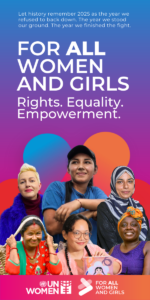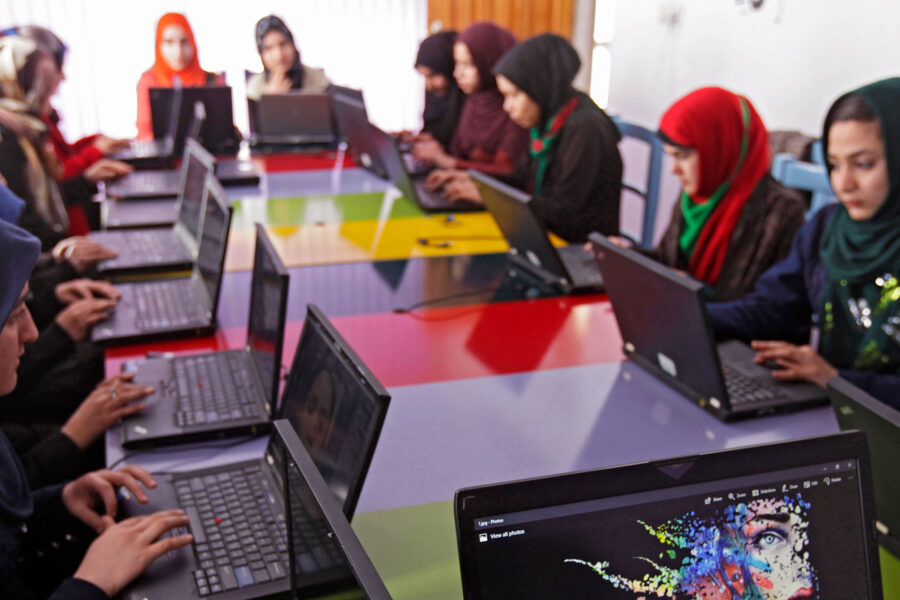Women’s participation in law
The legal profession remains stubbornly male-dominated, with women lawyers often facing discrimination, disempowerment, and abuse. It needs urgent reform, led by women, if it’s to equitably serve all citizens for whom it seeks to provide justice
Gender — Global

Globally, more than half of all law graduates are women but their presence in senior decision-making roles and in positions of influence is concerningly low. The gap is narrower in the public sector than in the private sector but, overall, the picture is one of lack of parity and influence where it counts.
According to the International Bar Association, women lawyers make up 51% of the profession but only occupy 32% of senior roles. In the judiciary, women make up 43% of all judges and hold 26% of all senior positions.
Women lawyers are not a monolithic group and disparities in representation among women are accentuated by factors such as race and ethnicity. A study by McKinsey & Company, in North America, reveals that women’s representation decreases rapidly at the post-associate level all the way through to the management committee and partner levels, and women of color are by far the least represented at all levels. Further, a survey by the American Bar Association shows that women of color suffer negatively on account of a wider pay gap (including in comparison to white women) and fewer promotions: their competencies are more often doubted, and they are more likely to be mistaken for admin staff, custodian staff, or court personnel.
Generally, women lawyers are more likely to be interrupted when they speak, including when sitting on the bench as judges, to be assigned non-legal office housework, and to experience career stagnation or regression when they have children.
Discrimination in the legal profession is often expressed in the form of violence and harassment. The largest ever survey on bullying and sexual harassment in the legal field conducted by the International Bar Association shows that bullying and sexual harassment are pervasive in the legal profession and that both affect more women than men. Female judges are not immune to violence and harassment in their world of work, despite their elevated status in the profession. The Global Judiciary Integrity Network launched by the United Nations Office on Drugs and Crime has identified acts including sextortion, sexual harassment, sex discrimination, gender bias, unequal gender representation, gender stereotyping, and other forms of inappropriate sexual conduct as gender-related judicial integrity issues.
Root causes
Discriminatory practices, gender-blind policies, and structural gaps that fail to provide women lawyers with what they need to succeed are some of the leading reasons why many women are not thriving in the legal profession. Their strikingly low representation in higher positions, high concentration in lower-level jobs, lack of progression, and higher rate of attrition, are not specifically tied to their lack of competence as lawyers. Rather these trends persist due to a combination of factors, including:
- the pervasive attitudes of superiors and peers that embody sexist and harmful gender stereotypes
- violence and harassment in the world of work
- women’s disproportionate burden of caring responsibilities
Women lawyers operate in a male-dominated world and a profession that is primarily designed for male success. Harmful gender stereotypes, internalized by most to some degree, make many discriminatory behaviors and expectations seem natural, for example:
- the notion that men should be paid more for work of equal value because they are the breadwinners
- once women have children, their place is in the home as their primary role is of a caregiver
Similarly, violence and harassment in the workplace are expressions of unequal power relations and misogynistic attitudes that are all too often accepted as the norm – as is victim-blaming premised on the idea that women somehow provoke these behaviors.
Why is this a problem?
The current status of the legal profession reveals a troubling picture of abuse and female disempowerment, which may seem ironic considering that the victims in question are women trained in the use of the law who are presumably not as easily victimized as those in precarious jobs and are capable of defending their rights. It signals a loss of opportunity for women despite their potential, unnecessary hardship, and a lack of fairness. Those who complete a legal education have already earned the right to participate equally in the legal profession.
Further, it gives rise to skepticism as to whether a legal system that is rife with inequality and violence can deliver justice. The lack of accountability is antithetical to the notion of the rule of law and questions the very purpose and effectiveness of a legal system that is inherently unjust. It also puts into question the integrity of the profession and those currently in positions of leadership, both men and (the few) women alike.
A controversial question is who will lead and drive the reforms that are needed to transform the legal profession, especially considering the notable absence of those people in the legal profession who are most disadvantaged by the existing structural barriers and discriminatory practices, and when their absence helps maintain the status quo that is advantageous to those in power.
UN goals and initiatives
Several of the Sustainable Development Goals (SDGs) can be utilized to create a robust and holistic roadmap to transform the legal profession. SDG 5 on gender equality has a dedicated target to ensure women’s full and effective participation and equal opportunities for leadership at all levels of decision-making in political, economic, and public life (Target 5.5). This is to be measured by the proportion of women in managerial positions (Indicator 5.5.2). SDG 5 also calls for eliminating discrimination and violence against all women and recognizing and valuing unpaid care and domestic work through the provision of public services, infrastructure, and social protection policies, and the promotion of shared responsibility.
SDG 8 on labor is particularly relevant to enhancing women’s participation in the legal profession through the protection of labor rights and the promotion of safe and secure working environments for all workers (Target 8.8). It recommends compliance with a number of International Labour Organization (ILO) instruments (Indicator 8.8.2) which could be expanded to include ILO Convention 190 and Recommendation 206 on violence and harassment.
SDG 16 on peaceful and just institutions deals with representation in public service and in the judiciary on grounds including sex (Indicator 16.7.1). Further, it calls for a reduction in all forms of corruption and bribery (Target 16.5) which could be applied to the crime of “sextortion” as defined by the International Association of Women Judges.
Recommendations
The compounded disadvantages and risks faced by women in the legal profession point to the need for multidimensional structural reform of the legal profession with the direct participation of women lawyers. It is crucial for employers, government, and societal actors to recognize women’s lack of representation in the legal profession as a systemic issue. They must implement rights-based transformative solutions originating with the people who are most impacted. We must invest in measures that address the structural causes of the barriers, rather than merely spending on stopgaps developed from a management (this is, human resources) perspective. The legal profession needs interventions that go beyond providing flexible work hours and increasing diversity to those that address its androcentric character, eliminate sexism, and level the playing field for women. The profession needs feminist lawyers – both men and women – who are willing to use their power as lawyers to support women and replace discourses and practices that render women subordinate.
Some key steps that can be taken by employers include:
- Proactively support women’s career progression at all stages and put them in positions of leadership until there is parity at every level. Recognize and remove barriers and implement quotas to accelerate progress.
- Provide women lawyers with the tools and support they need to succeed in leadership roles, including:
a. creating a positive work environment
b. investing in measures directed at redistributing their care roles
c. taking steps to dispel common myths and stereotypes based on grounds of sex, gender, and race - Create formal processes and mechanisms to eliminate discrimination, violence, and harassment in the world of work such as:
a. conducting audits to identify the prevalence of sexism and gendered violence and its risk factors
b. introducing legal protections and measures to support victims of domestic violence at work
c. creating formal reporting mechanisms
d. preventing reprisals against those who report such incidents
Some key steps that can be taken by relevant institutions, government, and societal actors are:
- Sow the seeds of transformation through legal education by making sure that law school curricula embody the principles of equality and non-discrimination. Encourage law students to interrogate the unequal power dynamics embodied in law and in the legal profession and recognize the gendered barriers to entry and advancement. Equip future lawyers, through continuing legal education, to become agents of change and open new doors for those who follow.
- Support and invest in feminist lawyering and movement-building for women to collectively raise their voices against gender and sex-based discrimination and violence at a societal level. This should have a transformative purpose, so that calls for fundamental change of the legal profession, and those leading reform from within, can receive broad support.





